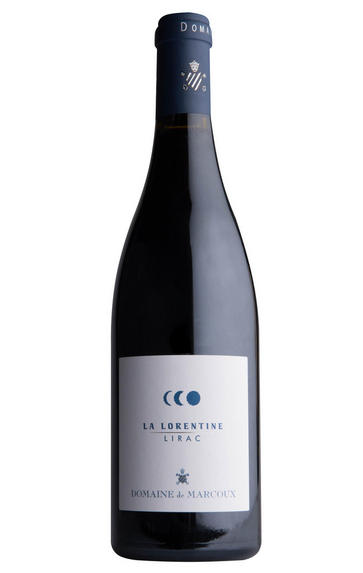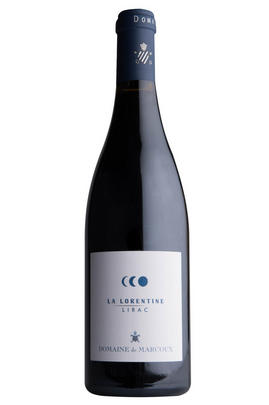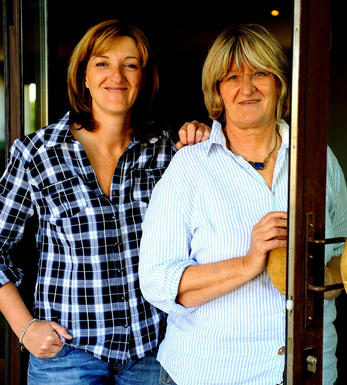
2021 Lirac, La Lorentine, Domaine de Marcoux, Rhône

About this WINE

Domaine de Marcoux
Sisters Sophie and Catherine Armenier have elevated Marcoux to the very highest ranks. Today, Sophie diligently runs the winery, while her son Vincent Estevenin looks after the vineyards. Now, there are 27 hectares split into over 20 parcels: 18 hectares lie right in the heart of the prime Châteauneuf-du-Pape terroir of La Crau plateau. The remainder rest in Lirac and the other Côtes du Rhône villages. Certified as organic by Ecocert as early as 1991, this year marks four decades of rigorous organic and then biodynamic principles.
The domaine makes three main wines: a Lirac, their main Châteauneuf-du-Pape and an exceptional Châteauneuf-du-Pape Vieilles Vignes – the top cuvée from this organically certified domaine. It’s made from two parcels of outstanding, old-vine Grenache: Charbonnières, planted in 2000 and Esqueirons, planted in 1949.
The cool, freshness of the 2021 vintage really plays to Domaine de Marcoux’s stylistic strengths of purity and minerality, aided as ever by their dedication to biodynamics. Their wines are always balanced but, at 1.5% abv lower than in 2020, both the Lirac and the Châteauneuf-du-Pape are especially gorgeous this year. These wines epitomise the crunchy, deliciously fresh appeal of 2021; they are lifted, fruit-forward and fragrant, and such a delight to drink.

Châteauneuf-du-Pape
The most celebrated village of the Southern Rhône, Châteauneuf-du-Pape is the birthplace of the now indispensable French Appellation d’Origine Contrôlée system – imperfect though it may be. Compared to the Northern Rhône, the vineyards here are relatively flat and often feature the iconic galet pebbles – the precise benefits of which are a source of much debate. Minimum alcohol levels required by the AOC are the highest in France, but at 12.5% it is well below the natural generosity of Grenache, which only achieves its full aromatic potential when it is fully ripe and laden with the resultant high sugars. Syrah and Mourvèdre contribute the other defining elements in the blend, adding pepper, savoury spice and structure to the decadent Grenache. There are a further 10 permitted red grape varieties which can be used to adjust the “seasoning”. Of the five white varieties permitted, it is Grenache Noir’s sibling – predictably perhaps – Grenache Blanc, which dominates, though Roussanne shows a great deal of promise when handled well, notably at Château de Beaucastel.

Grenache/Garnacha
Grenache (Noir) is widely grown and comes in a variety of styles. Believed to originate in Spain, it was, in the late 20th century, the most widely planted black grape variety in the world. Today it hovers around seventh in the pecking order. It tends to produce very fruity, rich wines that can range quite widely in their level of tannin.
In many regions – most famously the Southern Rhône, where it complements Syrah and Mourvèdre, among other grapes – it adds backbone and colour to blends, but some of the most notable Châteauneuf du Pape producers (such as Château Rayas) make 100 percent Grenache wines. The grape is a component in many wines of the Languedoc (where you’ll also find its lighter-coloured forms, Grenache Gris and Blanc) and is responsible for much southern French rosé – taking the lead in most Provence styles.
Found all over Spain as Garnacha Tinta (spelt Garnaxa in Catalonia), the grape variety is increasingly detailed on wine labels there. Along with Tempranillo, it forms the majority of the blend for Rioja’s reds and has been adopted widely in Navarra, where it produces lighter styles of red and rosado (rosé). It can also be found operating under a pseudonym, Cannonau, in Sardinia.
Beyond Europe, Grenache is widely planted in California and Australia, largely thanks to its ability to operate in high temperatures and without much water. Particularly in the Barossa Valley, there are some extraordinary dry-farmed bush vines, some of which are centuries old and produce wines of startling intensity.


Buying options
Add to wishlist
Description
Oh my, tasting this wine is like biting into a fresh raspberry. Subtle herbal elements of wild thyme and sage come through, but the ripe raspberry and fresh red cherry fruit is just wonderful. The mouthfeel is light and the wine dances on the palate yet the texture is smooth, with tannins that are like powder, melting as they scatter on the tongue. This has glorious freshness and is just so drinkable yet has plenty of concentration to keep going for a long time yet. This is an utterly delicious Lirac from Marcoux. Drink 2023 to 2031.
Catriona Felstead MW, Senior Buyer, Berry Bros. & Rudd (Nov 2022)
wine at a glance
Delivery and quality guarantee